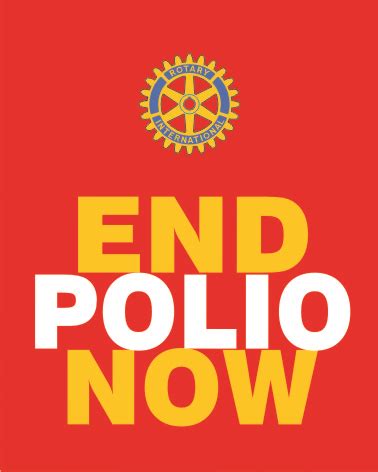
On February 1985, Rotary’s 80th birthday, RI President Carlos Canesco, announced to the incoming district governors training for their year ahead in Nashville, Tennessee, that the World Health Organization had endorsed Rotary’s bold plan for an effective Sabin-style polio program. Rotary’s “Polio 2005” commitment was to eradicate polio worldwide by the time of its 100th birthday in 2005. However, a few months later, it was decided to eliminate the reference to 2005 – which might denote a lack of urgency - and to add “plus” to reflect the inclusion of other health conditions, as well as polio, in the program. The Polio 2005 program became PolioPlus – To Immunize the Children of the World.
 The “plus” provided as a part of the polio eradication campaign varies from one area to another, depending on what is seen as a need. It might be additional medical treatment, bed nets to prevent malaria, or soap, access to clean water or education to improve hygiene. The poliovirus spreads through human waste, so making sure people aren’t drinking or bathing in contaminated water is critical to eradicating the disease.
The “plus” provided as a part of the polio eradication campaign varies from one area to another, depending on what is seen as a need. It might be additional medical treatment, bed nets to prevent malaria, or soap, access to clean water or education to improve hygiene. The poliovirus spreads through human waste, so making sure people aren’t drinking or bathing in contaminated water is critical to eradicating the disease.
A 2010 study estimated that the dual administration of vitamin A and polio vaccine had prevented 1.25 million deaths by decreasing susceptibility to infectious diseases. Vitamin A is essential for the functioning of the immune system and the healthy growth and development of children. It is usually acquired through a healthy diet. Yet, vitamin A deficiency is the leading cause of preventable childhood blindness and increases the risk of death from common childhood infections, such as measles and gastroenteritis. Vitamin A deficiency affects about one in three children in sub-Saharan Africa and South-East Asia. A lack of vitamin A also impairs the effectiveness of oral polio vaccine. For these reasons, vitamin A drops are now given at the same time as the polio drops.
The health workers involved in the polio immunization, surveillance, and outbreak responses have used their skills in disease outbreaks such as:
- During an outbreak of Ebola in Nigeria in 2014, health workers prevented that disease from spreading beyond 19 reported cases by using methods developed for the polio eradication campaign to find anyone who might have come in contact with an infected person.
- During a 2018 yellow fever outbreak in Nigeria, the polio health workers vaccinated 8 million people against that disease.
- For several months in 2020, the Global Polio Eradication Initiative suspended polio immunization activities and reduced its polo surveillance work to enable Covid-19 surveillance work, and to educate communities in Covid prevention strategies such a s social distancing and hand hygiene.
Over the years, health workers and volunteers supported by PolioPlus grants have built an infrastructure for delivering health care that, in many parts of the world, didn’t exist before. The legacy of PolioPlus is more than eradicating a deadly disease from the planet — it’s also building a stronger health system that provides better access to lifesaving interventions for the world’s most vulnerable children.
Photo- Health worker Falmata Mustapha rides a hand-operated tricycle, donated to her by Rotary’s Nigeria PolioPlus Committee, for door-to-door campaigns. - RI